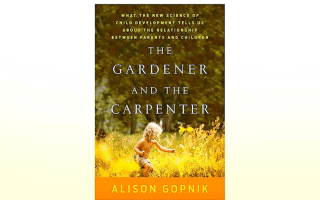We get it. The one thing that would be truly game-changing for parents during this pandemic is childcare or safe in-person school. We wish we had a solution for that. But until public policy can catch up to real-world needs, here’s a list of fun screen-free activities for kids that will keep them entertained, engaged and learning.
We selected activities to encourage independent play and hopefully only require distant supervision from you. They are also low-to-no prep for parents and chosen for their likelihood to engage children for extended periods. That’s why there are no book recommendations for kids learning to read, but there are many recommendations for book series for readers. If you can get a kid hooked on a series, then you can guarantee some hours to yourself. Of course, it’s all contingent on your kids’ age, where they are developmentally, and their personal preferences.
A word of caution
The age range is a rough guide. Only you know what your child can do and, more importantly, what is appropriate for their age. For example, the game Kerplunk has small parts that can be a choking hazard. Although 3-year-olds can play this game, will your 3-year-old be able to keep the marbles out of their mouths? Most of these activities are fun for kids older than 8, too. Look out for our screen-free activities for tweens and teens article next week.
Have additional ideas? Please share them with the community in the comments below!
At Such Is Motherhood, our curated picks are always independently selected. When you buy something through our affiliate links, we may earn a small commission. This does not affect the price you pay and helps us cover the cost of running this site. Sometimes, we provide links solely for your convenience, for which we won’t receive any compensation. Our goal is only to suggest the most notable products. Listed prices may change after publication. See full policy here.
Screen-Free Activities for Preschool Kids
Preschool kids need to exercise their hand muscles to build strength and develop them properly. The first three activities below are used in preschools for this purpose. The fourth activity is for sensory development, which is also critical for this age group.
1.Playdough:
Kids need to exercise their hand muscles, and playdough is a great way to build hand strength needed for writing later on. Our recipe is: 2 cups flour, 1 cup salt, 1/8 cup cream of tartar, 1/4 cup oil, food coloring, 2 cups boiling water. Be sure the water is boiling. Mix everything together and color as desired. Store in airtight containers. This recipe makes enough for multiple kids. It also divides and multiplies well.
2.Painting, Drawing/Scribbling and Coloring:
When doing these activities, children are not only working hand muscles. They are building problem-solving skills. While doing art, a child needs to make certain decisions. Where to put specific colors? Where on the page? What medium to use? How do they interact? Therefore, we should leave them to create as they wish without adult direction. There’s a lot for them to learn by making the decisions for themselves.
3.Cutting:
We like to make paper heads with strips of hair so our toddlers can give them a haircut. We’ve yet to meet a kid who doesn’t enjoy this one. They will sit for a while, just cutting away. Make sure you make a lot of heads before leaving your child to it. Otherwise, they will keep asking you for more. Or, if you prefer to support a teacher, you can purchase downloadable pre-drawn worksheets from one.
4.Sensory Bins:
Preschoolers love sensory bins. These hard-to-cleanup water beads listed below are our favorite because kids love them. For easier cleanup, lay out an old sheet and set the bin in the middle. Then, let the kids go wild. When it’s time to clean up, you can grab all four corners of the sheet, pour the beads back into the bin and close the lid for another day of play.
Indoor Screen-Free Activities for Kids:
Games
Balance Beam Challenge: Lay a beach towel or another long towel rolled lengthwise. Challenge the kids to walk across, but stay on the towel.
Hide and Seek: This classic game is so much fun for kids in this age group. However, don’t expect the preschoolers to know how to hide. They will often tell the seeker where they are hiding and giggle about it.
Red Light, Green Light: One player is the traffic cop, and the rest of the players go to a starting line far away from the traffic cop. When the cop says “green light,” all players try to reach the cop first. When the traffic cop says “red light,” all players have to freeze. Anyone who is still moving after “red light” is called must return to the starting line. The first player to reach the cop wins.
Simon Says: This is a great game to help kids practice executive functioning skills. To play this game, kids need to exercise focus, self-control, and cognitive flexibility. See video instructions here.
Balloon Tennis: Just like it sounds, this game involves a net, 2-4 rackets and a balloon. Play in singles or doubles. Hit the balloon back and forth over the net. You can keep score or not.
Target Practice: Set up rows or stacks of paper towel rolls and knock them down with balled up socks!
Building Blocks, Tiles and Bricks
Puzzles
Board Games/Game Sets
Card Games
Books
Outdoor Screen-Free Activities For Kids
Take a Nature Walk: Make bracelets with packing tape. They should be worn sticky side out. That way, kids can pick up blades of grass, berries, leaves or flower petals with their bracelets. This is just as fun in your front or backyard.
Four-Square: This game requires some driveway space so you can draw the four-square court with chalk. Your children most likely already play this at school, but if not, here is how you play. You can play with as few as two kids and use only two squares.
Wall Ball: Another popular recess game for school-age kids. If you have a garage door and a rubber bouncy ball, your kid can play wall ball. See rules here. This game is played in most schools, but may go by a different name.
Chalk Painting: Most likely, your kids have used sidewalk chalk, but have they painted with it? All you need is sidewalk chalk and a bowl of water to soak the chalk. Once soaked, the chalk still draws like chalk, but the color applies more like paint and the colors become more vibrant. If you just need large quantities and don’t care about color range, your neighborhood dollar store probably has 9 for $1.
Activities that encourage Exploration and Experimentation
Make Giant Bubbles: Sure, your kids have blown bubbles, but giant bubbles are a whole new kind of fun. See here to make your own giant bubble solution and wands.
Water Table/Sand Table: Believe it or not, activities that encourage kids to fill, pour and shape help develop pre-math skills. The experience helps them see fractions and volumes in action and build geometric shapes. The best thing is, you don’t need to explain these concepts to them. Just let them play and learn on their own.
Yard Explorers: Encourage front yard/backyard exploration with a magnifying glass, tweezers, a bug catcher and a container for found treasures. If your kids love nature, these tools will get them excited for some independent playtime!
Imaginary play outdoors
Gardening: Watering plants or gardening with kid-size tools is a great way to encourage pretend play as well as exploration. It helps kids build their imagination and curiosity.
Mud Play and Outdoor “Cooking”: Playing with mud is not just fun for kids; it helps them with proper sensory development. Our senses influence the way we experience and perceive the world. So, put them in old clothes and let them cook away! If you have old kitchenware you no longer use, the outdoor kitchen could use them.
Tent or Fort Building: Kids love to build forts and probably already build them at home all the time, but have they built one outdoors? Novelty is a great way to engage a kid and fort building is something we already know they enjoy. Other excellent and readily available building materials include chairs, tables, pillows, blankets, sheets, cardboard boxes and couches.
Active Outdoor Equipment
Ride-on Toys: Encourage active play and exercise with these kid-tested items. Aerobic exercise is not only necessary for proper physical development, but it’s also brain-building.
Read more posts about Parenthood






